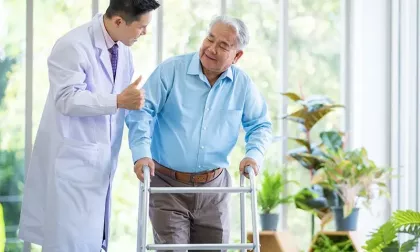How to Keep Your Hips Healthy for the Long Haul

To find ways to keep your hips healthy for as long as possible, let’s examine how they work, what causes hip pain, and methods to preserve them.
A joint is where two bones connect, and there are several types of joints responsible for a variety of basic functions.
The largest type of ball and socket joint (a type of synovial joint) is located in your hip. This joint alone is responsible for your ability to do lots of different things with your lower body. Actions like walking, running, jumping, squatting, climbing, and many others wouldn’t be possible without your hips.
Pain in your hips can be caused by a variety of problems, and hip problems are common enough that hip replacements account for almost 14 billion dollars in health care expenses.
If you live in the Medford or Grants Pass, Oregon, areas and you’re dealing with hip pain, our team of doctors at Southern Oregon Orthopedics offers treatment options to restore your hip function.
To find ways to keep your hips healthy for as long as possible, let’s examine how they work, what causes hip pain, and methods to preserve them.
How your hips work
You have ball and socket joints in your shoulders and hips, and these joints allow for the most freedom of movement. In the case of your hip joint, the socket area is inside your pelvis, and the ball part of this joint is the top of your thighbone (femur).
Movement is controlled by the gluteal, abductor, iliopsoas, and rectus femoris muscles and many tendons and ligaments. Together, all of these parts work to offer the stability necessary for your basic lower body motions.
Causes of hip pain
Some common causes of hip pain include:
Arthritis
Osteoarthritis and rheumatoid arthritis are most commonly responsible for hip pain, causing inflammation and breaking down of the cartilage in your joint.
Fractures
Injuries can lead to fractures and breaks in your hips, and because your bones weaken as you age, the risk increases over time.
Bursitis
Sacs of fluid called bursa build up between your bones, muscles, and tendons, and cause pain when they become inflamed.
Tendinitis
Inflammation in your tendons is frequently caused by repetitive stress due to overuse of your joints.
Strains and tears
Overuse can also lead to strains in your muscles or tendons, and athletes are at a higher risk of labral tears.
Methods to preserve hip health
There are several exercises you can do to help maintain your hip health, whether you’re dealing with pain or not.
Warming up
The Frankenstein walk is considered a great way to warm your body up. It works several areas, including your hips, quadriceps, and hamstrings, and helps increase your range of motion.
Hip circles
This activity is used to increase both flexibility and stability and involves several sets of moving each leg in a circular motion in both directions.
Resistance band exercises
The sidestep exercise engages your hip muscles by placing a resistance band around your ankles, staying in a squatting position, and slowly stepping from side to side.
Clamshell exercise
You can use this activity to build hip, thigh, and gluteal strength, as well as stabilize your pelvic muscles and relieve lower back tightness. Lie on your side and rotate your leg as high as possible, hold, then lower your leg.
Weight exercises
Weight exercises that can help your hips include the lateral step up and single-leg Romanian deadlifts. These help work your quadriceps, gluteal muscles, and hamstrings, and provide stability and strength to your core. They can also improve balance and hip mobility.
Hip pain can come from several conditions, but there are ways to relieve and reduce your pain. Make an appointment with our medical team at Southern Oregon Orthopedics today to get hip pain relief. Call our office most convenient to you or schedule your visit online.